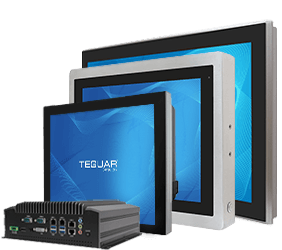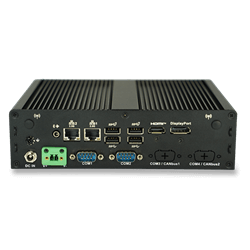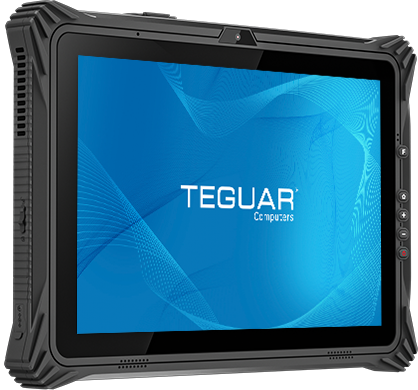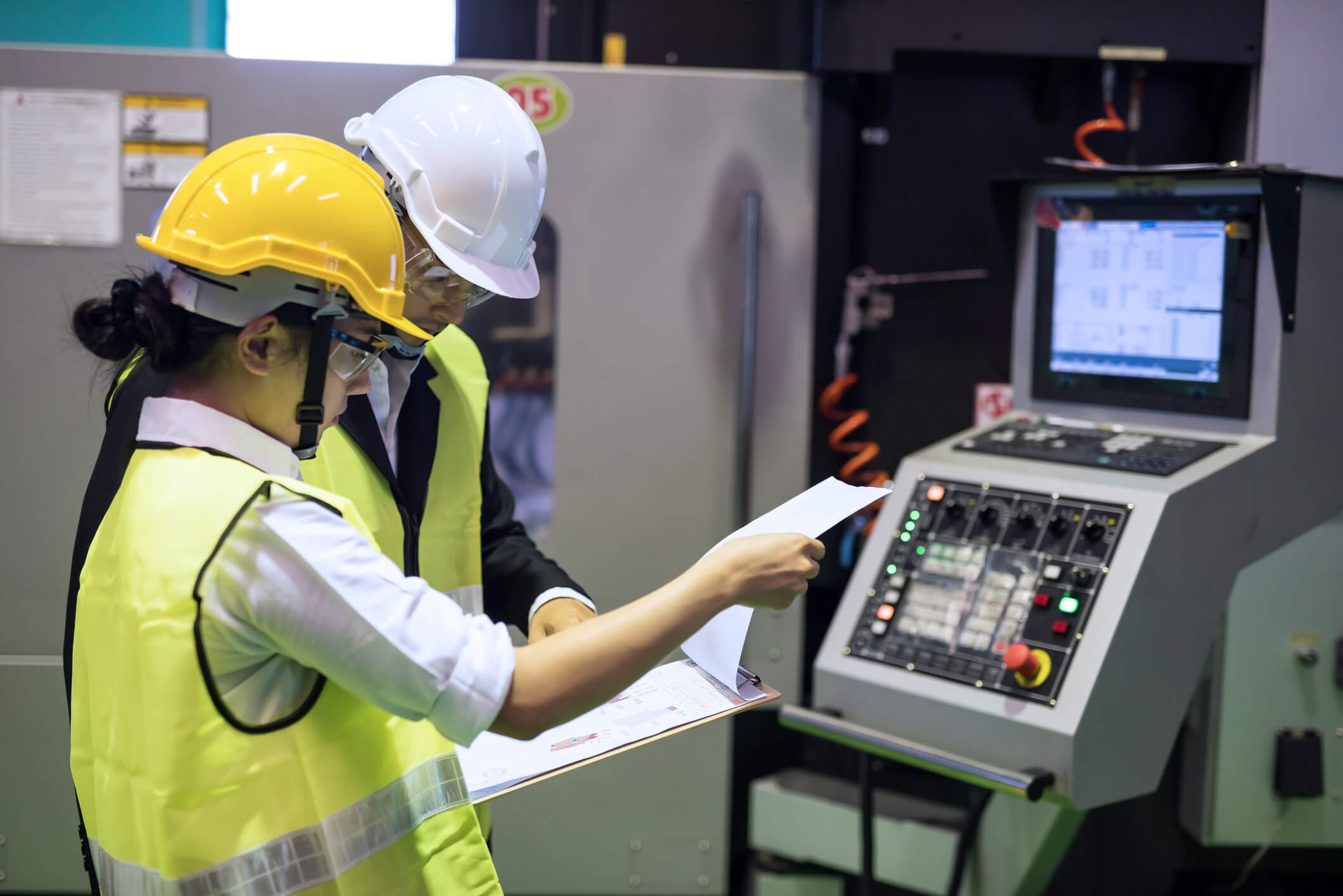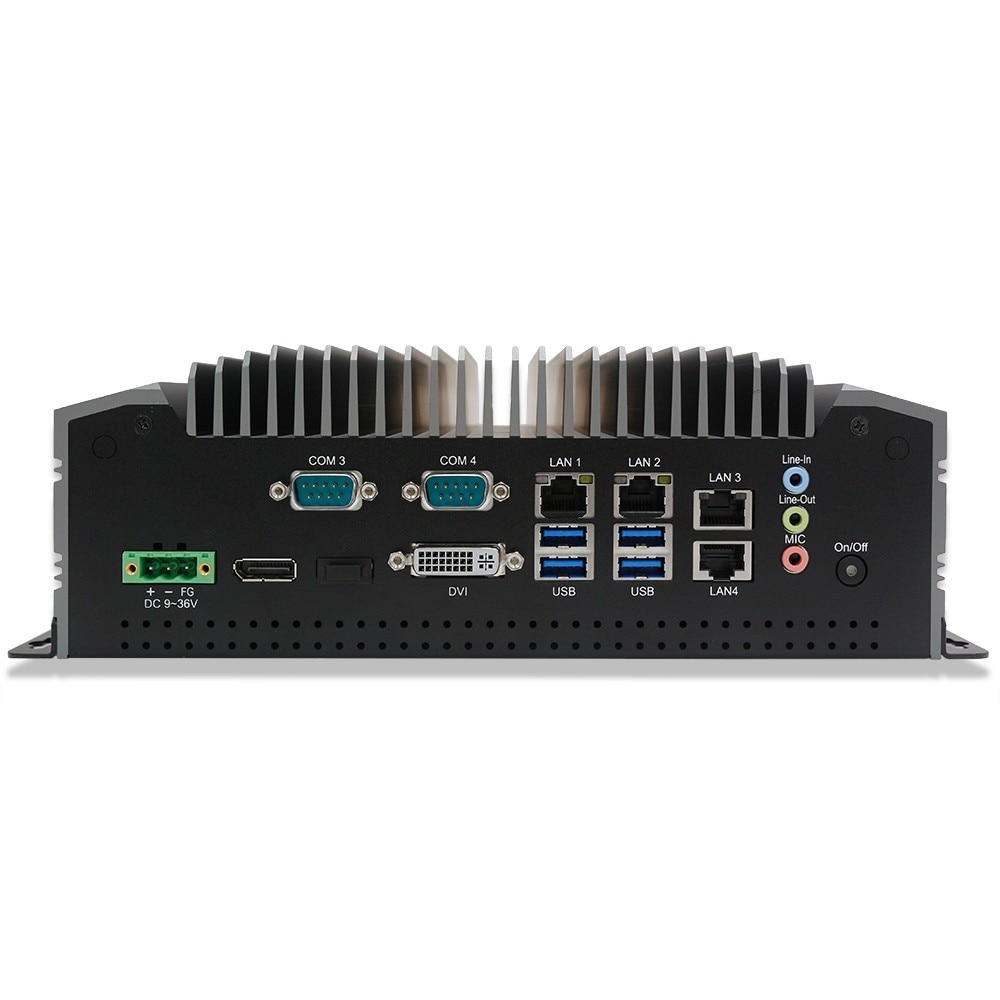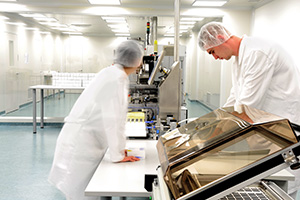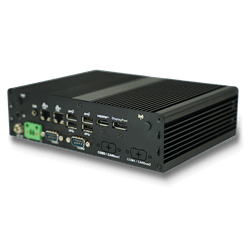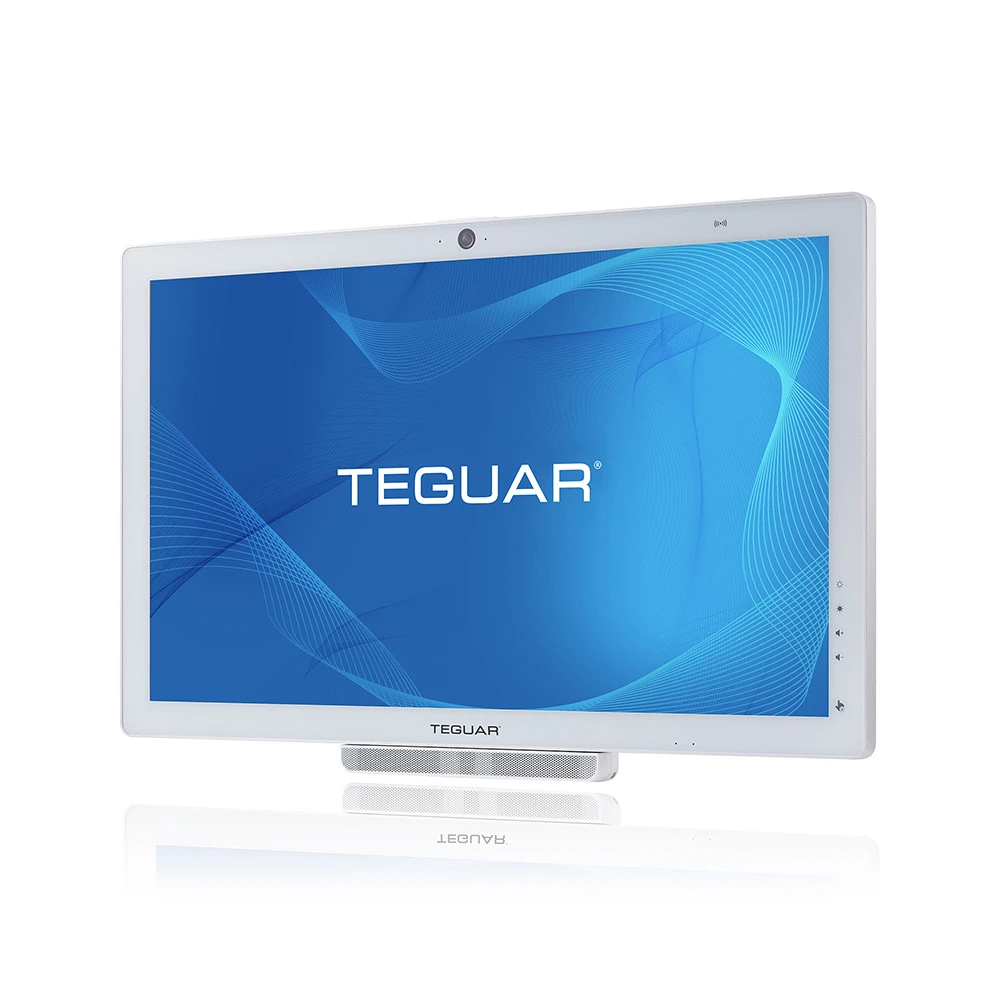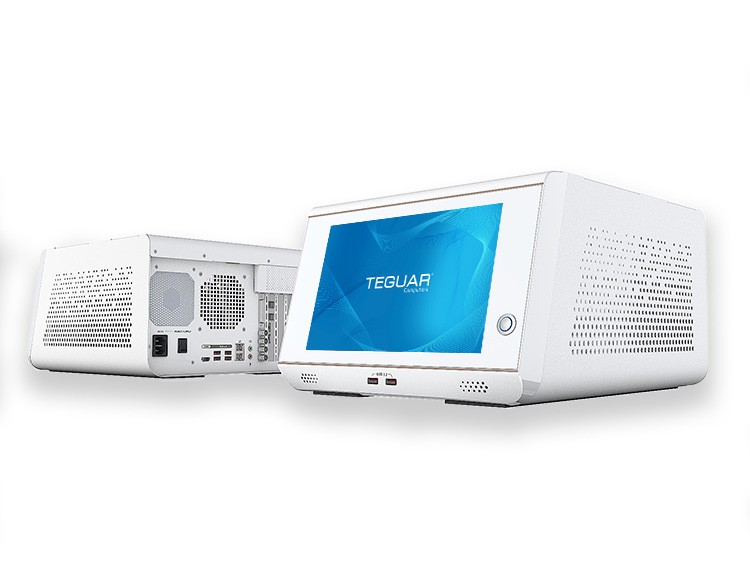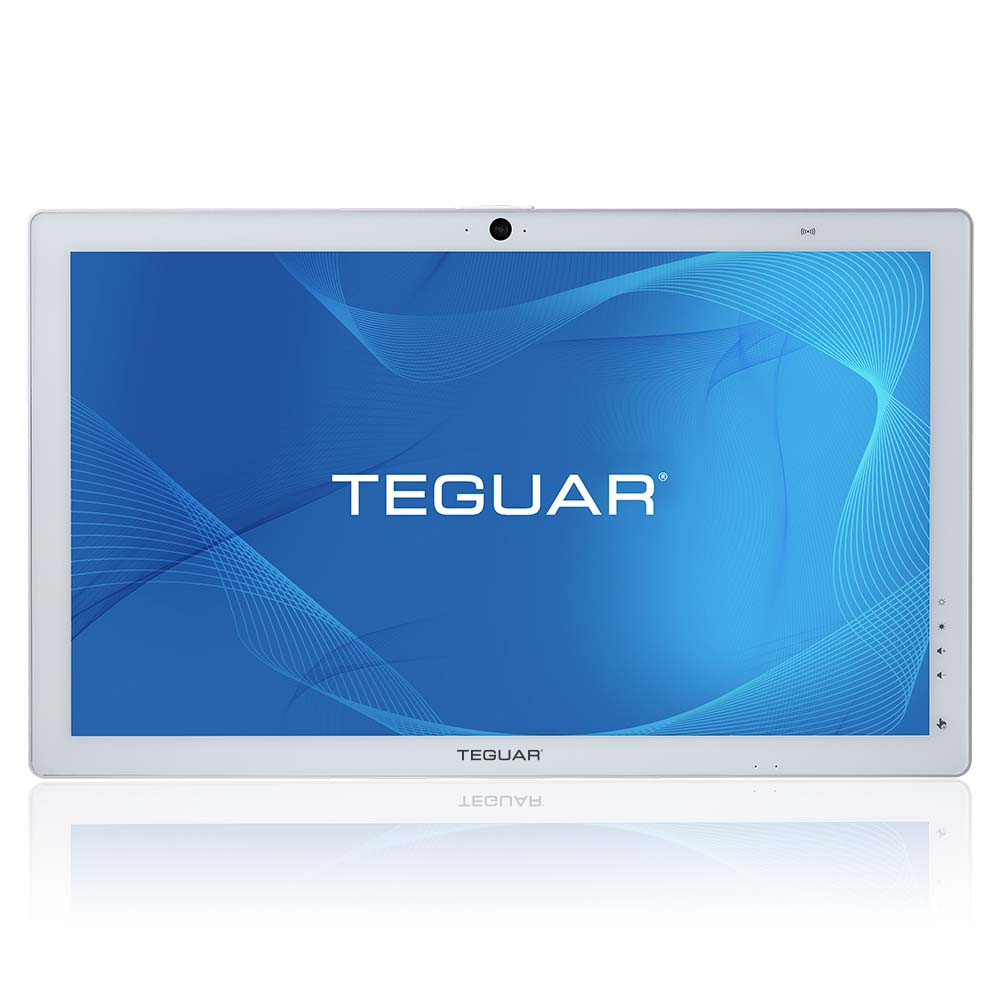Do I need an HMI Panel PC or a PLC HMI?
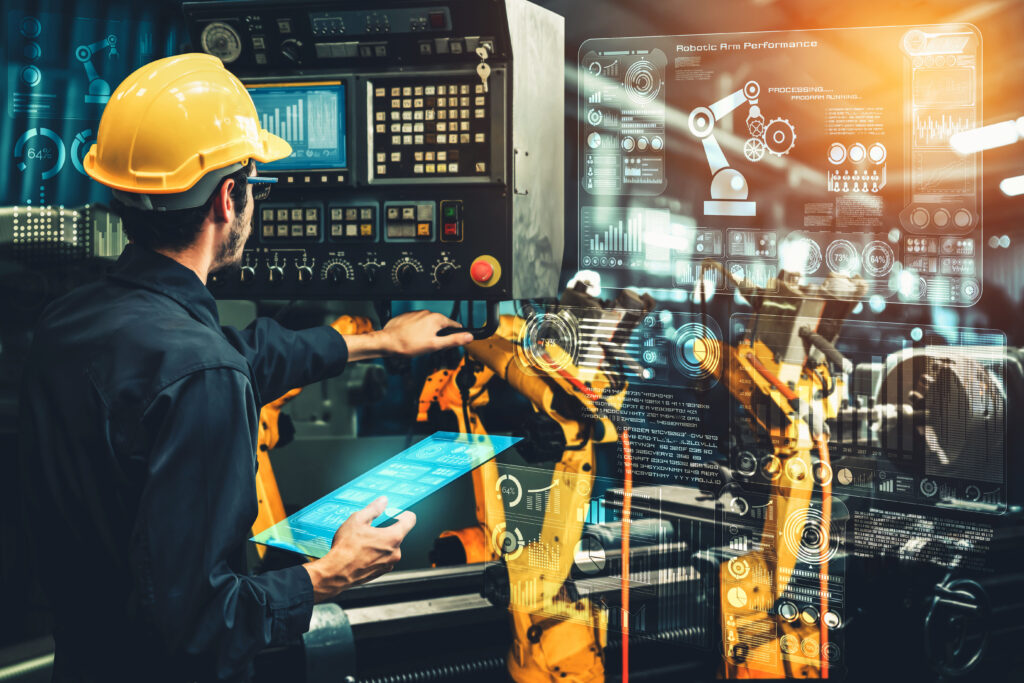
The question of whether or not to use a PLC or panel PC as the HMI for the industrial automation line has plagued engineers in manufacturing plants for several decades. Programmable Logic Controllers (PLCs) were invented by Richard Morely in 1968 and pioneered in the 1970s by the company Allen-Bradley, who was instrumental in getting the United States to the moon. Since then, PLCs and HMI panel computers have grown up side-by-side. It could be argued that PLCs were the starting point for computers as a “yes/no” or “open/shut” industrial decision maker. Logic is how a control board is built, which is similar to a system of 1’s and 0’s.
Concept Overview
What PLCs and panel PCs have in common is that they both are electrical systems of logic, which can be used as a basis to control other systems in machine automation. The added term HMI (Human Machine Interface) is used to describe the fact that they can also serve as conduit for humans to interact with the machines that are being controlled. Furthermore, the interface of the HMI is usually a touch screen for a panel PC, but it can also be a system of buttons or switches, more commonly found on older PLCs.
In the industrial manufacturing world, the term HMI typically refers to the whole system of control including the actual computer or PLC system. In the world of software developers, programmers or UX designers, an HMI refers to just the screen and buttons or actual sensory interface. For the purposes of this article and audience, and HMI will be used in the context of the industrial manufacturing world.
What are the similarities between using a HMI Panel PC and a HMI PLC?
External Design
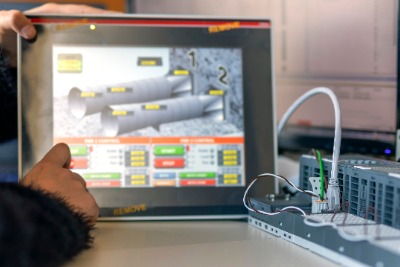
Some PLCs will look exactly like small panel PC HMIs, and it might be hard to tell them apart from a panel computer at first glance. The older PLCs and/or large PLCS will typically have a panel of switches and many COM looking ports on the back. Modern PLCs and panel PC HMIs will typically have a touchscreen. However, PLCs are usually not made to withstand the environmental demands that a panel PC can endure.
Tasks They Can Perform
Both a PLC and a panel PC can control a manufacturing process and both can serve as the programming HMI (people to tell manufacturing machines what to do). While the typical “ladder logic” of a PLC is different from a computer they can both perform some of the same functions.
A PLC functions by using an advanced panel of switches, sending control signals to process equipment through an electrical current. This means that a PLC can be used to control various manufacturing processes based on sensors and equipment signals. An industrial panel PC can do everything that a PLC system can, but works with entirely different technology. An industrial panel PC will need a millisecond to “think through” a control topic that may be instantaneous with an PLC electrical signal. However, a PLC has a limited number of decisions it can handle at once. Therefore, a PLC is typically better for simple, unchanging, and localized manufacturing processes while a panel PC HMI is typically better for more complex, frequently changing, and highly connected manufacturing processes.
What are the differences between a HMI Panel PC and a HMI PLC?
Programming
PLCs – As mentioned, a PLC is not a computer per se, but rather works on a different type of technology. There are currently five programming languages used to code PLCs which are specified in the IEC 61131-2 standard. They are Ladder Logic, Function Block Diagram (FBD), Structured Text (ST), Sequential Function Chart (SFC) and Instruction List (IL). If you are going to choose a PLC for your control interface, you will need to make sure that you stay within the systems specified by IEC 61131-2. The programming system remains closed.
Panel PCs – There are many programming languages used for panel PCs such as C/C++, .NET, Python, PHP, Javascript, and more. The ability to build on any current programming language gives the panel PC HMI a clear advantage in software application flexibility. The programming system remains open.
Connectivity and I/Os
PLC HMI – While PLCs have gotten more sophisticated over the years, they still generally have limited I/Os. The most common I/Os they use are Ethernet , RS-232, or RS-884 ports. In addition to that they can have line in/out, power, and sometimes USB ports. While the most recent PLCs can be interacted with through remote signaling, they do not connect to the internet. This may be a security advantage for some and an operational disadvantage for others.
Panel PC HMI – Panel PCs can have about any type of current I/O you want in them. Although, for efficiency and cost they are typically built to have the minimal I/Os needed. However, many panel PCs will have an expansion port or mini PCI-e in them which will allow for some future configuration adjustments. The main connectivity advantage a panel PC HMI brings to the manufacturing process is that they can connect with industry 4.0 or the IIoT (Industrial Internet of Things). This means regulatory requirements can be met with real-time tracking, while efficiencies are gained at the same time due to increased inputs.
Processing Power and Storage
Because of the different technology, PLCs can perform some tasks faster than a panel PC HMI at the helm. Think of how a child can make a quick shift or turn with agility of a smaller mass than an adult who has larger mass. The same analogy applies to processing power and storage. A child-like PLC is good at focusing on only the immediate task at hand while a panel PC HMI “adult brain” will be able to bring many external considerations into the mix.
Conclusion
If your manufacturing, processing, or packaging facility has a process that does not need to interact with external systems, does not change, and has relatively simple machinery, a PLC HMI to control your machines may be the right choice. If you have processes that need to build from intelligent data, undergo change at regular intervals, an have a pattern of moving towards complexity, you will likely need a panel PC HMI. Contact a knowledgeable Teguar account representative can help advise and if they don’t know they answer, you can get further expertise from a Teguar product manager or sales engineer.
References:
https://www.techtarget.com/whatis/definition/programmed-logic-controller-PLC
https://control.com/technical-articles/the-origin-story-of-the-plc/
https://control.com/technical-articles/connecting-multiple-plcs-to-an-hmi/
https://control.com/news/how-has-plc-programming-evolved-through-the-years/
https://www.rockwellautomation.com/en-us/company/about-us/our-history.html
https://www.vanert.com/page/plc-and-hmi-programming


